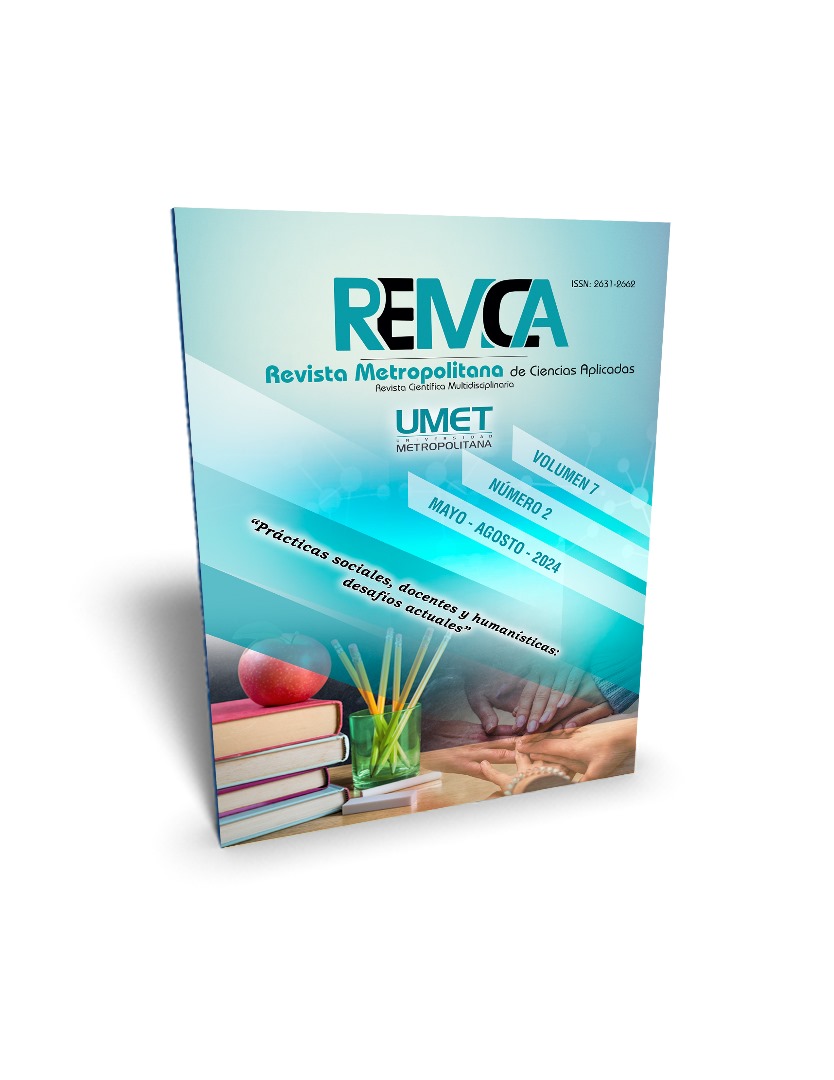The usage of Duolingo when teaching English vocabulary to fifth-gradetudents at Unidad Educativa Rumiñahui
DOI:
https://doi.org/10.62452/tpsvyg17Palavras-chave:
English vocabulary, usage, teachingResumo
Learning English can be challenging for students in rural areas due to limited access to educational resources. Technology has emerged as a solution to this problem, providing students with easy access to English language learning tools such as Duolingo, which can be downloaded on any device. This app can help students improve their English vocabulary and overall learning process. The aim of this study is to explore how useful Duolingo is in teaching English vocabulary as a foreign language to fifth-grade students at Unidad Educativa ‘‘Rumiñahui’’. An explanatory mixed method design was established by using a pre-test vocabulary and a structured interview with a convenience sample of learners based on their availability. Furthermore, the results obtained from the interviews were assembled using triangulation and discourse analysis, and then combined with the data gathered through the pre-test since this instrument greatly helped to classify the most relevant information for each aspect, as noted by Sayago (2014). Indeed, the data collected has been evidently positive since learners showed how practical and beneficial would the idea to use Duolingo be when they learn English.
Downloads
Referências
Ahmadi, D. M. (2018). The use of technology in English language learning: A literature review. International journal of research in English education, 3(2), 115-125. https://ijreeonline.com/article-1-120-en.html
Ajisoko, P. (2020). The Use of Duolingo Apps to Improve English Vocabulary Learning. International Journal of Emerging Technologies in Learning (iJET), 15(07), 149–155. https://doi.org/10.3991/ijet.v15i07.13229
Ansah, G. N. (2021). Cognition and Language Learning. Newcastle-upon-Tyne: Cambridge Scholars Publishing, 2020. Pp xiv + 157, including tables, references and appendix. ISBN 978-1-5275-4482-6. Language and Cognition, 13(1), 154–159.
Collie, R.J., & Martin, A.J. (2019). Motivation and engagement in learning. In Oxford Research Encyclopedia of Education. Oxford University Press.
Gusano, C. (2017). 5 Advantages of Learning a New Language with An App. Babbel Magazine. https://www.babbel.com/en/magazine/5-advantages-of-learning-a-new-language-with-an-app
Hazaymeh, W. (2020). The Impact of Integrating Digital Technologies with Learners’ Multiple Intelligences to Facilitate Learning English as a Foreign Language. Asian EFL Journal, 27, 182-212. https://www.asian-efl-journal.com/monthly-editions-new/2020-monthly-editions/volume-27-issue-4-1-october-2020/index.htm
Huda, M., Janattaka, N., & Prayoga, N. (2023). Exploring the use of online resources for english language learning: students' perspectives. English Journal Literacy Utama. 8. 794-802. https://ejl.widyatama.ac.id/index.php/ejlutama/article/view/231
Krashen, S. (1982). Principles and Practice in Second Language Acquisition. Pergamon Press
MacNealy, M. S. (1999). Strategies for empirical research in writing. Addison Wesley.
Motteram, G. (2013). The Benefits of New Technology in Language Learning. British
Nolen, J. (2008). Multiple Intelligences in the classroom. Semantic scholar. https://openurl.ebsco.com/EPDB%3Agcd%3A10%3A16343706/detailv2?sid=ebsco%3Aplink%3Ascholar&id=ebsco%3Agcd%3A11047099&crl=c
Ormerod, R. (2006). The history and ideas of pragmatism. Journal of the Operational Research Society, 57, 892-909. https://link.springer.com/article/10.1057/palgrave.jors.2602065
Rafiqa, R. (2020). The English vocabulary acquisition. Journal of English Education and Development, 1(1), 18-34. https://www.researchgate.net/publication/340162141_The_English_Vocabulary_Acquisition
Sayago, S. (2014). El análisis del discurso como técnica de investigación cualitativa y cuantitativa en las ciencias sociales. Cinta moebio, 49. https://www.moebio.uchile.cl/49/sayago.html
Seidman, I. (2006). Interviewing as qualitative research: a guide for researchers in education and the social sciences. College Press.
Sorádová, D. (2018). Strategies for teaching English spelling and reading. Issues in early education, 1(40). https://www.ceeol.com/search/article-detail?id=689930
Wilkins, D. A. (1972). Linguistics in Language Teaching. MFT Press.
Downloads
Publicado
Edição
Seção
Licença
Copyright (c) 2024 Leslie Micaela Perez-Reyes, Martha Magdalena Guamán-Luna (Autor/a)

Este trabalho está licenciado sob uma licença Creative Commons Attribution-NonCommercial-ShareAlike 4.0 International License.
Os autores que publicam na Revista Metropolitana de Ciencias Aplicadas (REMCA), concordam com os seguintes termos:
1. Direitos autorais
Os autores mantêm direitos autorais irrestritos sobre suas obras. Os autores concedem ao periódico o direito de primeira publicação. Para tal, cedem à revista, em caráter não exclusivo, direitos de exploração (reprodução, distribuição, comunicação pública e transformação). Os autores podem firmar acordos adicionais para a distribuição não exclusiva da versão publicada do trabalho no periódico, desde que haja reconhecimento de sua publicação inicial nesta revista.
© Os autores.
2. Licença
Os trabalhos são publicados na revista sob a licença Creative Commons Atribuição-NãoComercial-CompartilhaIgual 4.0 Internacional (CC BY-NC-SA 4.0). Os termos podem ser encontrados em: https://creativecommons.org/licenses/by-nc-sa/4.0/deed.pt
Esta licença permite:
- Compartilhar: copiar e redistribuir o material em qualquer meio ou formato.
- Adaptar: remixar, transformar e desenvolver o material.
Nos seguintes termos:
- Atribuição: Você deve dar o crédito apropriado, fornecer um link para a licença e indicar se alguma alteração foi feita. Você pode fazer isso de qualquer maneira razoável, mas não de uma forma que sugira que o licenciante endossa ou patrocina seu uso.
- Não comercial: você não pode usar o material para fins comerciais.
- Compartilhamento pela mesma licença: se você remixar, transformar ou criar a partir do material, deverá distribuir sua criação sob a mesma licença do trabalho original.
Não há restrições adicionais. Você não pode aplicar termos legais ou medidas tecnológicas que restrinjam legalmente outros de fazerem qualquer coisa que a licença permita.




